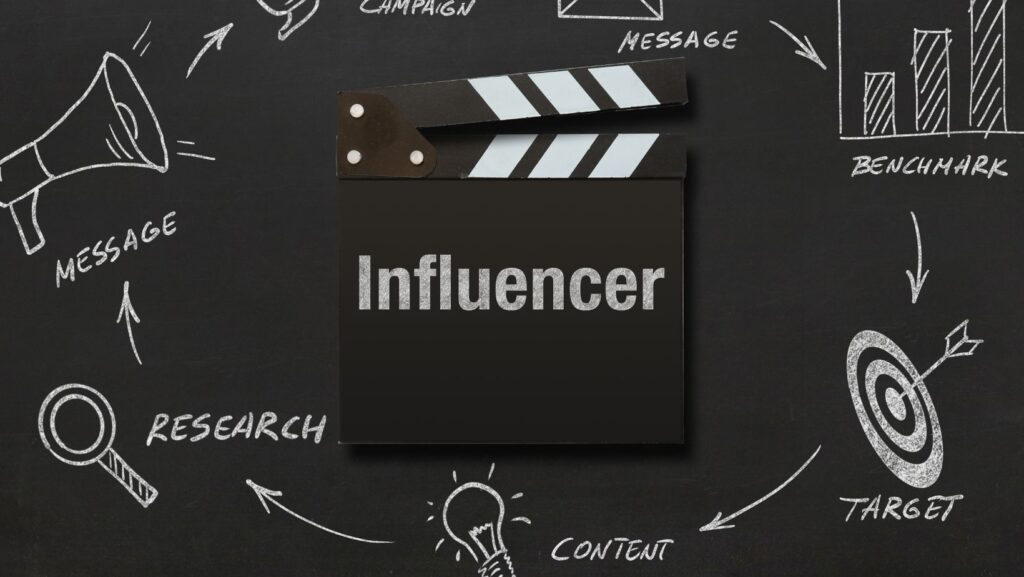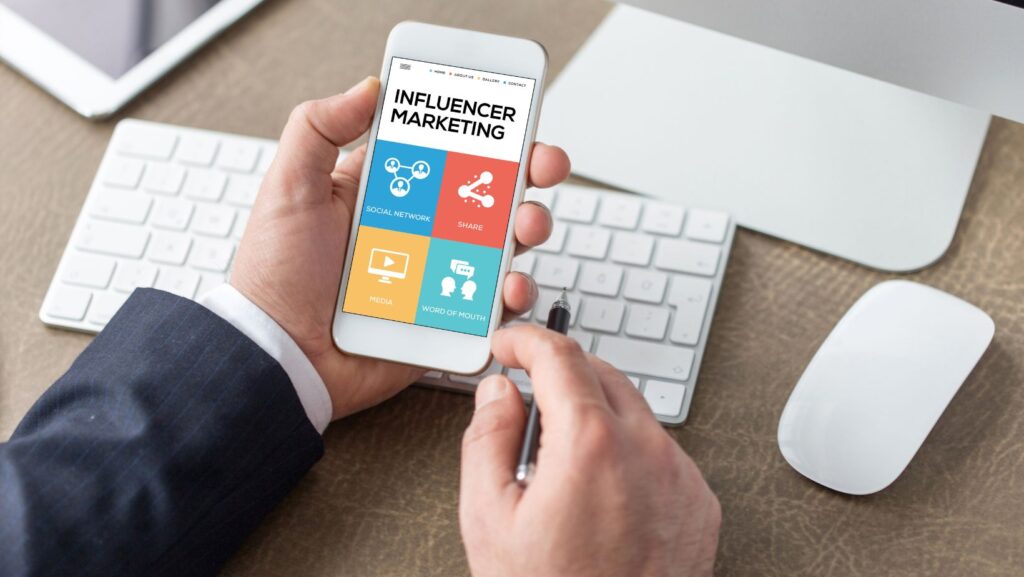Influencer Marketing 101: Boosting Your Business with Social Influence

Influencer marketing has emerged as a major change in digital marketing.
This novel strategy makes use of the power of well-known persons known as influencers who have a large following on social media platforms.
Because of their authority, knowledge, or relationship with their audience, these influencers have the unique power to affect the purchasing decisions of their followers.
In this article, we will delve into the world of influencer marketing and investigate how it may be used to catapult your company to new heights.
Understanding Influencer Marketing
Influencer marketing is a sort of social media marketing that incorporates influencer endorsements and product placements.
But who are these decision-makers?
They are classified into four major types:
Mega-Influencers: These are the celebrities of the social media world, boasting millions of followers. They have a broad, diverse audience and can generate massive awareness for your brand.
Macro-Influencers: These influencers have a following ranging from 100,000 to 1 million. They often focus on specific niches and have a highly engaged audience.
Micro-Influencers: With a following between 1,000 and 100,000, micro-influencers are known for their high engagement rates and niche audiences. They are often seen as relatable and trustworthy by their followers.
Nano-Influencers: These influencers have fewer than 1,000 followers but are highly influential within their small community. They are often ideal for businesses targeting a very specific demographic or local area.
Influencers play a diverse function in marketing.
They can serve as content creators, brand advocates, and respected experts in their industries.
Influencer marketing has various advantages. It has the potential to raise brand awareness, attract new audiences, generate high-quality leads, and boost sales.
It enables businesses to interact with their target audience in a more genuine and intimate manner.
Implementing Influencer Marketing in Your Business

Identifying your goals and objectives is the first step in implementing influencer marketing in your organization.
Do you want to raise brand awareness, enhance revenue, or reach a new demographic?
Having specific objectives can help you direct your plan and measure the success of your campaign.
You must identify the ideal influencer for your brand. This entails taking three crucial variables into account: relevance, reach, and resonance.
The material of the influencer should be relevant to your brand and industry. Their reach, or the amount of their following, should correspond to your marketing objectives, and should be appealing to your target audience.
This means that their principles, personality, and style are consistent with the image of your company.
Following the identification of potential influencers, the next stage is to approach and create connections with them.
Reaching out via social media or email, introducing your business, and proposing a prospective cooperation can be part of this.
Influencers are frequently flooded with partnership requests, so be honest, respectful, and clear about what you’re offering.
You can work with influencers in a variety of ways
- Sponsored posts entail paying an influencer to promote your product or service in their article.
- Product reviews entail giving the influencer your product to evaluate and share their honest opinion with their audience.
- Giveaways and contests can stimulate interest and participation, whereas brand ambassador programs entail a long-term connection with an influencer who continuously promotes your company.
Measuring the Success of Your Influencer Marketing Campaign

Measuring the performance of your influencer marketing campaign is critical to evaluating its impact and ROI.
This includes tracking key performance indicators (KPIs), which are quantitative measures used to assess a campaign’s success. Here are some of the most essential influencer marketing KPIs and their formulas:
Engagement Rate: This measures the level of interaction content received from an audience. It includes likes, comments, shares, and saves. The formula to calculate engagement rate is:
Engagement Rate = (Total Engagements / Total Followers) x 100%
Impressions: This is the number of times your content was displayed to users. While it doesn’t guarantee that the content was actually viewed, it gives an idea of the potential size of your audience.
Reach: This is the number of unique users who saw your content. It’s a measure of the potential audience size.
Click-Through Rate (CTR): This measures how many people clicked on a specific link in your content. The formula to calculate CTR is:
CTR = (Number of Clicks / Number of Impressions) x 100%
Conversions: This is the number of desired actions taken as a result of someone clicking on your content. This could be making a purchase, signing up for a newsletter, or downloading a resource. The formula to calculate conversion rate is:
Conversion Rate = (Number of Conversions / Number of Clicks) x 100%
ROI: This measures the profitability of your campaign. It’s calculated by subtracting the cost of the campaign from the revenue it generated, then dividing it by the cost of the campaign, and finally multiplying by 100 to get a percentage. The formula to calculate ROI is:
ROI = [(Revenue – Cost of Campaign) / Cost of Campaign] x 100%
There are several tools available that can help track and measure these KPIs. Here are a few examples:
Google Analytics: This is a powerful tool for tracking website traffic, conversions, and user behavior. It can be particularly useful for tracking the CTR and conversion rate of your influencer marketing campaigns.
Social Media Analytics: Platforms like Instagram, Facebook, and Twitter have built-in analytics that can provide valuable insights into engagement rate, impressions, and reach.
Influencer Marketing Platforms: Tools like AspireIQ, Upfluence, and Traackr are specifically designed to help businesses manage and measure their influencer marketing campaigns. They can provide detailed analytics on a range of KPIs, including engagement rate, reach, impressions, and ROI.
UTM Parameters: These are tags that you add to a URL. When someone clicks on a URL with UTM parameters, those tags are sent back to your Google Analytics for tracking. They can be used to track the success of specific influencer campaigns.
Tracking these KPIs and using these tools, you can gain a clear understanding of the success of your influencer marketing campaign and use these insights to optimize future campaigns.
Case Studies of Successful Influencer Marketing Campaigns

To illustrate the power of influencer marketing, let’s look at a few case studies of successful campaigns.
Case Study 1: To advertise their new skincare line, a well-known beauty business collaborated with a number of micro-influencers. The influencers developed genuine content highlighting the products and sharing their own experiences with them. The campaign increased brand recognition and sales significantly, illustrating the potential of micro-influencers in reaching a targeted, engaged audience.
Case Study 2: A small clothing brand and a macro-influencer teamed to host a prize campaign. The influencer advertised the contest to their followers, who had to follow the brand and tag a friend in order to join. The campaign resulted in an influx of new brand followers as well as a considerable boost in website traffic and sales.
Case Study 3: A technology corporation created a brand ambassador program in collaboration with many nano-influencers in the tech community. The influencers promoted the company’s items in their content on a regular basis and provided their followers with a unique discount code. The campaign generated a continuous stream of high-quality leads and conversions, demonstrating that even influencers with small followings may have a big impact.
Action List. Work Breakdown Schedule

Work Breakdown Structure (WBS) for your influencer marketing campaign without the numbers:
Project Initiation
- Define campaign objectives
- Identify target audience
- Establish budget
Influencer Identification
- Research potential influencers
- Evaluate influencers based on relevance, reach, and resonance
- Shortlist potential influencers
Influencer Outreach
- Develop outreach strategy
- Draft outreach messages
- Send outreach messages
- Follow up on outreach messages
Influencer Collaboration
- Negotiate collaboration terms
- Provide influencers with product information and guidelines
- Review and approve influencer content
Campaign Launch
- Coordinate content posting schedule with influencers
- Launch campaign
- Monitor campaign progress
Campaign Analysis
- Track key performance indicators (KPIs)
- Analyze campaign performance using tools like Google Analytics, social media analytics, and influencer marketing platforms
- Adjust campaign strategy based on results
Campaign Wrap-up
- Calculate return on investment (ROI)
- Document lessons learned
- Thank influencers for their participation
Post-Campaign Follow-up
- Maintain relationships with successful influencers for future collaborations
- Evaluate overall campaign success and areas for improvement
Each of these tasks can be broken down further into subtasks, depending on the complexity of your campaign.
Future Trends in Influencer Marketing

A number of trends are expected to alter the influencer marketing environment in the future.
The rise of virtual and AI influencers is one such trend. These computer-generated influencers can provide marketers with novel and intriguing methods to interact with their audiences.
Another significant trend is the increasing value of authenticity and openness. Consumers are growing smarter and more cautious of excessively promoted content.
As a result, influencers who are open about their collaborations and generate real material that truly reflects their thoughts and experiences are more likely to succeed.
Long-term influencer collaborations are becoming more popular. Instead of one-time collaborations, marketers are establishing long-term connections with influencers.
This enables for more constant and authentic brand marketing, which can lead to greater long-term results.
Final Thoughts

Influencer marketing is expected to evolve further in the future. The rise of virtual and AI influencers, the increasing emphasis of authenticity and transparency, and the shift toward long-term influencer partnerships are all defining the future of this marketing strategy.
For organizations willing to embrace influencer marketing, there are numerous opportunities. It’s a fun, interactive, and successful approach to reach out to and engage with your audience.
Consider how influencer marketing can play a role in your overall marketing plan, whether you’re a tiny firm just getting started or a well-established brand trying to increase your reach.
It’s time to start cultivating those connections and utilizing the power of influence to propel your company ahead.
Long-term influencer collaborations are becoming more popular. Instead of one-time collaborations, marketers are establishing long-term connections with influencers.
This enables for more constant and authentic brand marketing, which can lead to greater long-term results.
FAQ
Q: What is influencer marketing?
A: Influencer marketing is a type of social media marketing that combines product placements and endorsements from influencers, who have a large social following and are regarded as experts in their field.
Q: What are the different types of influencers?
A: There are four types of influencers: Mega-Influencers, Macro-Influencers, Micro-Influencers, and Nano-Influencers. These classifications are based on followers, with Mega-Influencers having the most and Nano-Influencers having the fewest.
Q: How do I find the right influencer for my brand?
A: Finding the ideal influencer entails taking three crucial elements into account: relevance, reach, and resonance. The content of the influencer should be relevant to your company, their reach should be aligned with your campaign goals, and they should resonate with your target audience.
Q: How do I measure the success of my influencer marketing campaign?
A: Key performance indicators (KPIs) like engagement rate, impressions, click-through rate (CTR), conversions, and return on investment (ROI) can be used to measure success. Google Analytics, social media analytics, and influencer marketing systems can all assist in tracking and measuring these KPIs.
Q: What are some future trends in influencer marketing?
A: Future trends include the rise of virtual and AI influencers, the growing importance of authenticity and transparency, and a shift towards long-term influencer partnerships.
Bio

Ronnie Patterson
Ronnie Patterson, founder of MagnÜron, is a multifaceted entrepreneur with a diverse background in music, electronics engineering, and engineering management. Drawing on experience across various industries, He offers expertise in SEO, operations, and strategy to help businesses thrive. Possessing a unique perspective and unwavering commitment to collaboration, and ideal partner for growth and success.






